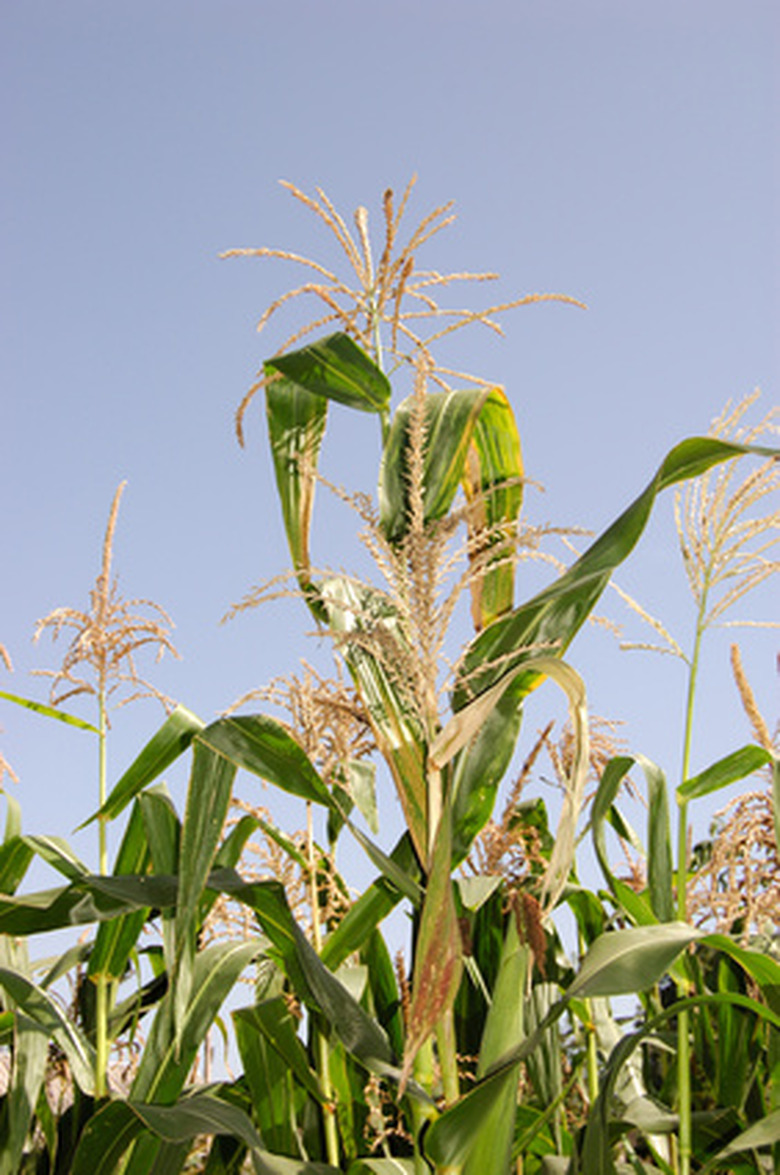Inert Materials In Fertilizers
Chemical fertilizers are widely used in large agricultural businesses that raise food crops such as corn, soybeans and wheat for the public. Fertilizers contain nitrogen, phosphorus and potassium, which are essential plant nutrients. But most also contain inert ingredients as fillers to prevent clumping and other features.
Ammonium Phosphate
This chemical is commonly found in chemical fertilizers. Ammonium phosphate contains up to 46 percent phosphorus, according to the J.R. Simplot Company. Although it is beneficial in nourishing plants, Cameo Chemicals reports on its website that this chemical can irritate mucus membranes and have toxic effects on soil.
Aluminum
The U.S. Environmental Protection Agency prohibits the disposal of hazardous wastes, including heavy metals, in landfills. However, such wastes are often included as inert ingredients in chemical fertilizers. Aluminum is one of the heavy metals found in many commercial fertilizers. Cornell University reports that the use of aluminum on acidic soils results in a toxic condition that creates ions, or "electrically charged particles," which create difficult conditions for plants to grow. Aluminum soil toxicity cuts crop yields in half the world's cultivated land, mainly in the Third World.
- Chemical fertilizers are widely used in large agricultural businesses that raise food crops such as corn, soybeans and wheat for the public.
Lead
Lead is a metal that occurs naturally in the crust of the Earth. It is found in many diverse areas and often results from mankind's burning of fossil fuels, manufacturing and mining activities. Lead is one of the inert materials of commercial chemical fertilizers. Although it has many beneficial uses, such as in the manufacture of batteries and ammunition, lead has been implicated in some diseases and even death of those who are exposed to large amounts of this metal. The EPA has listed lead as a "probable human carcinogen." It is unclear whether food crops fertilized with chemical fertilizers containing lead absorb enough of this metal to cause human health problems. As of 2010, it is legal for chemical fertilizers to contain lead as an inert ingredient.
Zinc
Many zinc fertilizers are made from industrial waste as a way of recycling this heavy metal. The EPA states in a November 2000 fact sheet covering regulations regarding zinc fertilizer recycling that such hazardous wastes are not dangerous because they are not applied in large quantities to corn, potatoes and fruit trees. They also state that half of zinc fertilizers are made from EPA-regulated industrial wastes that are considered hazardous. Electric and steel furnaces, brass foundries and ash that results from burning tires are often the source of the wastes. The EPA concludes that such fertilizers "do not appear to contain contaminants ... at levels that present public health concerns."
- Lead is a metal that occurs naturally in the crust of the Earth.
- The EPA states in a November 2000 fact sheet covering regulations regarding zinc fertilizer recycling that such hazardous wastes are not dangerous because they are not applied in large quantities to corn, potatoes and fruit trees.
Chromium
According to Lenntech Water Treatment Solutions, chromium is a silver-gray, brittle, lustrous hard metal. It is used in alloys, including stainless steel and chrome plating. It is also used in leather tanning and in the molds used to make bricks and magnetic tape. After these products are completed, chromium must be disposed of, so it sometimes ends up in chemical fertilizers as an inert ingredient, which is legal under U.S. environmental law. Hexavalent chromium is considered very dangerous and was the cause of many cancers in California, as told in the movie "Erin Brockovich." In addition, chromium can cause skin rashes, upset stomachs, respiratory problems, weakening of the immune system, damage to the liver and kidneys and alteration of genetic material.
